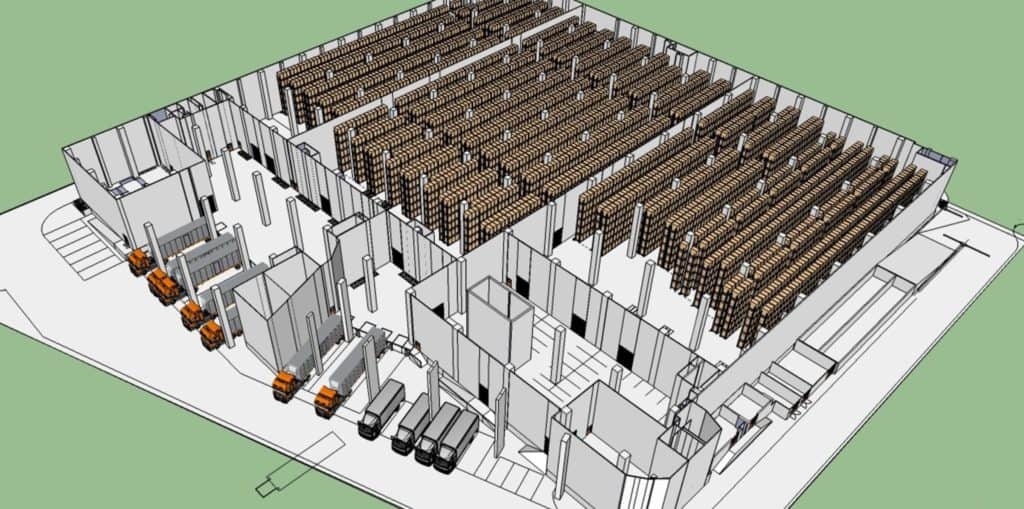In the ever-evolving landscape of logistics and supply chain management, where efficiency is paramount, technological innovations play a pivotal role. Among the array of tools available, none stands out as distinctly as warehouse planning software. This advanced solution is not merely a convenience; it has become a transformative force, offering unparalleled advantages in optimizing warehouse operations, resource utilization, and overall efficiency.
Enhancing Efficiency with Cutting-edge Software
At the core of warehouse planning software is its ability to transcend conventional methods. It provides a holistic platform that strategically organizes and manages warehouse spaces, surpassing the limitations of traditional approaches. In the realm of inventory management, these software solutions shine by delivering real-time insights, minimizing errors, and streamlining processes. By empowering warehouse managers with intuitive interfaces and robust analytics, these tools become catalysts for informed decision-making, resulting in a substantial and measurable boost in overall efficiency.
Warehouse planning software acts as a beacon of efficiency in the sometimes complex and rapidly changing landscape of warehouse management. It seamlessly integrates with existing systems, providing a comprehensive overview of the entire warehouse ecosystem. Through its intuitive interfaces and analytics capabilities, managers gain real-time insights into inventory levels, order statuses, and operational bottlenecks. The result is not just streamlined operations but a proactive approach to warehouse management, ensuring that potential issues are identified and addressed swiftly.
Streamlining Inventory Management for Peak Performance
Efficient inventory management is not merely about tracking items but ensuring a seamless flow of goods. Warehouse planning software elevates this process by introducing dynamic features such as advanced inventory tracking, demand forecasting, and order fulfillment optimization. This goes beyond meeting current demands; it anticipates future needs, ensuring a well-oiled system that maintains a seamless flow of goods and materials.
Beyond the basics of inventory management, these software solutions delve into the intricacies of demand forecasting. By leveraging historical data, trends, and market insights, warehouse planning software aids in predicting future demand with remarkable accuracy. This proactive approach ensures that warehouses are well-prepared to handle fluctuations in demand, preventing stockouts or excess inventory.
Order fulfillment optimization is another area where these tools shine. Through intelligent algorithms and real-time data analysis, warehouse planning software streamlines the order fulfillment process. This not only speeds up the delivery process but also minimizes errors, contributing to customer satisfaction and loyalty.

Maximizing Space Utilization for Optimal Results
The perpetual challenge of space optimization in warehouse management is met head-on by warehouse planning software. This software revolutionizes the game by providing 3D modeling capabilities, allowing for a meticulous layout of storage areas. The result is a strategic and efficient utilization of every square foot, minimizing wastage and maximizing storage capacity. Each square inch becomes a contributing factor to the overall efficiency and profitability of the warehouse.
Traditional methods of space optimization often fall short due to their inability to visualize the warehouse layout comprehensively. Warehouse planning software addresses this limitation by offering 3D modeling capabilities. Warehouse managers can virtually map out storage areas, aisles, and shelving, considering factors such as product dimensions and turnover rates. This meticulous planning ensures that every inch of available space is utilized efficiently, contributing to cost savings and operational efficiency.
Real-time Data Insights: A Strategic Advantage
In the fast-paced world of logistics, where every moment counts, warehouse planning software proves to be indispensable by offering real-time data insights. With just a few clicks, managers can effortlessly monitor inventory levels, track shipment progress, and identify bottlenecks in the process. This immediate access to crucial information translates into swift decision-making, fostering an agile and responsive warehouse environment.
Beyond mere efficiency, the real-time data insights provided by warehouse planning software offer a strategic advantage. Managers can analyze trends, identify patterns, and make data-driven decisions to optimize warehouse operations continually. This proactive approach to data utilization ensures that the warehouse remains adaptable to changing market conditions, emerging trends, and customer preferences.
Ensuring Accuracy with Automated Processes
The vulnerability of manual processes to errors poses a significant risk to inventory management. Warehouse planning software addresses this challenge head-on by automating routine tasks, substantially reducing the margin for human error. Automated data entry, order processing, and inventory tracking contribute to a more accurate and reliable warehouse management system. This not only minimizes costly mistakes but also enhances the overall accuracy of operations.
Automation is a linchpin in the effectiveness of warehouse planning software. By automating routine and repetitive tasks, these tools free up human resources to focus on more complex and strategic aspects of warehouse management. Automated data entry, order processing, and inventory tracking not only reduce the likelihood of errors but also significantly speed up these processes. The result is not just operational efficiency but a more agile and adaptable warehouse ecosystem.
Future-proofing Warehouse Operations
As technology continues to advance, the capabilities of warehouse planning software are set to evolve further. The integration of machine learning algorithms and artificial intelligence is on the horizon, promising even greater efficiency and predictive analytics. Businesses investing in such software now are not merely adopting a solution; they are future-proofing their warehouse operations. By staying ahead of the curve in an ever-changing industry, these businesses are positioning themselves as leaders in efficiency and innovation.
The prospect of machine learning and artificial intelligence integration adds another layer of sophistication to warehouse planning software. Machine learning algorithms can analyze vast amounts of data, identifying patterns and trends that may not be immediately apparent to human operators. This predictive capability is invaluable in anticipating future demand, optimizing inventory levels, and proactively addressing operational challenges.
In Conclusion: A Strategic Imperative for Modern Warehousing
In the dynamic landscape of warehouse management, where the bar for competitiveness is continually rising, embracing the latest technologies is not just an option; it’s a necessity. Warehouse planning software transcends the realm of being a tool; it emerges as a strategic imperative. Its unparalleled ability to enhance efficiency, streamline operations, and provide real-time insights positions it as the cornerstone of modern warehouse management. To stay competitive in the fast-paced world of logistics, embracing this technological marvel is not just recommended; it is a crucial step towards securing a competitive edge.
As we look towards the future, the role of warehouse planning software will only become more pivotal. The integration of machine learning and artificial intelligence will usher in a new era of predictive and adaptive warehouse management. Those who recognize the strategic imperative of investing in and evolving with these technologies are not just ensuring efficiency today but are also future-proofing their operations for the challenges and opportunities of tomorrow.
